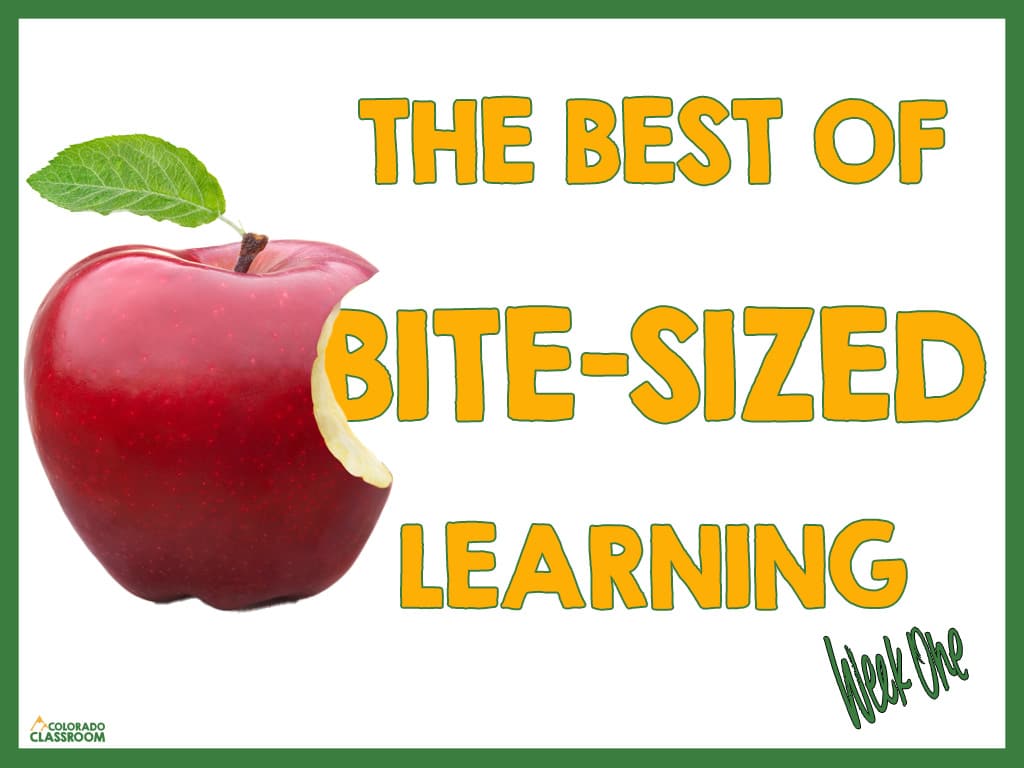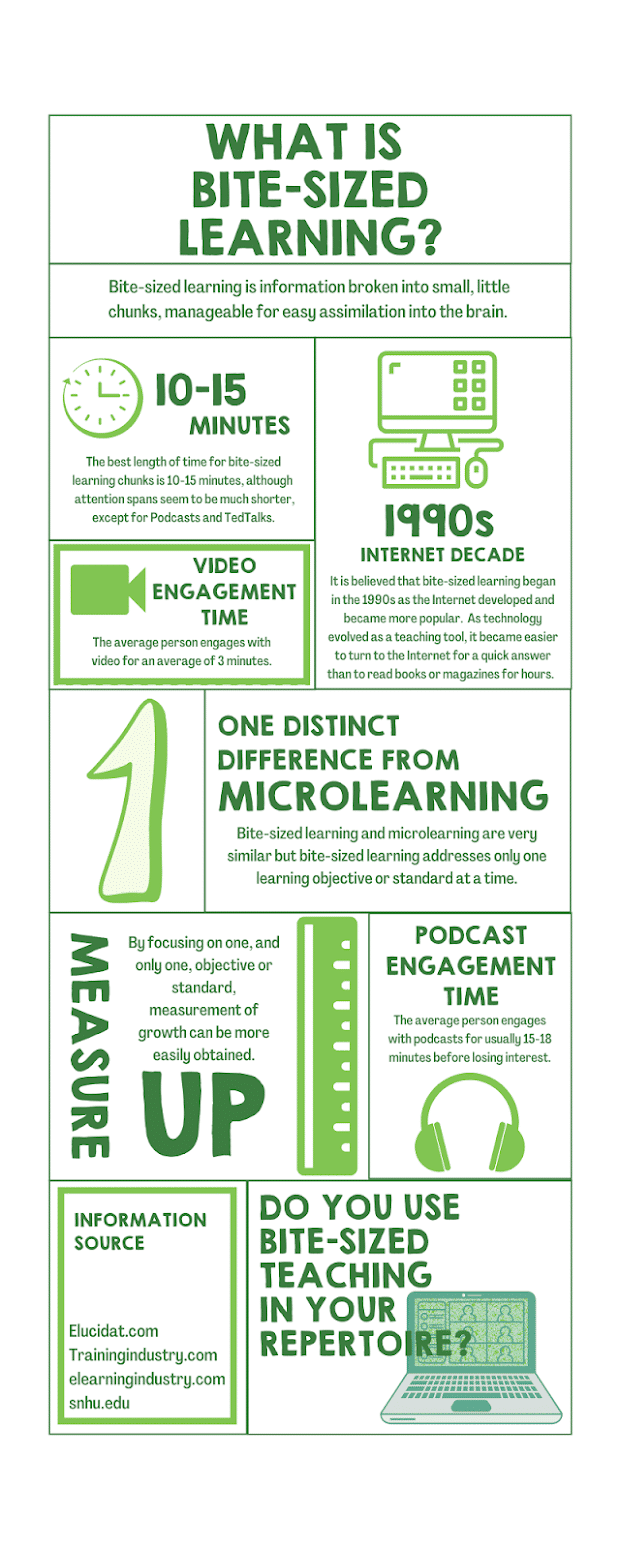The Best of Bite-Sized Learning – Week One
What is Bite-Sized Learning? The world of education is changing. Attention spans are getting smaller. Digital screens are replacing paper pages. Personalized plans are for everyone. Self-paced learning is sweeping through classrooms. When all that comes together, what we get is a new style of learning.

This blog post kicks off a series on bite-sized learning presented in a bite-sized format. Over the next few weeks, I will present various information through infographics, video, images, and more. You’ll learn about this method, when it began, why to use it, and some examples. You’ll even get to see how I put it into practice in my own classroom. By absorbing the material over the following three posts, you’ll be able to learn about both the content and structure, as well as the application and methods applied.

Bite-Sized Learning Begins
Starting in the 1990s with the invention of the Internet, this new trend began to make its mark. Books and magazines are becoming outdated very quickly. Information is now at our fingertips. People turn to their phones, computers, and the Internet for what they want to know. A quick search can find anything from how to teach reading to what country in Africa has never had an invader.
Along with this has come a shorter attention span. People move from article to article and video to podcast quickly. The human attention span wanes. Teachers must move from topic to topic in order to keep the learning moving. The average attention span lasts for only 3 – 18 minutes on a good day. Depending on the type of media, teachers are fighting an uphill battle when it comes to educating and entertaining young minds in the classroom.
Also, by using bite-sized learning to break information into chunks, it creates a more manageable education environment for the modern student. By addressing one standard at a time, teachers more accurately measure growth, as well. Together these two things work to keep young minds occupied and learning continuing.
Understand More in the Coming Weeks
Be sure to check out the next post in the series, to learn about different types and styles of bite-sized learning. You will probably see that you are already using many of these methods and don’t even realize it.
Then in Week 3, I will show examples of how you can use this in your classroom and with your students.


Pingback: Sample a Taste of Bite-Sized Learning: A Series – Week Three – The Colorado Classroom
Pingback: The Best of Bite-Sized Learning - Week Three - The Colorado Classroom